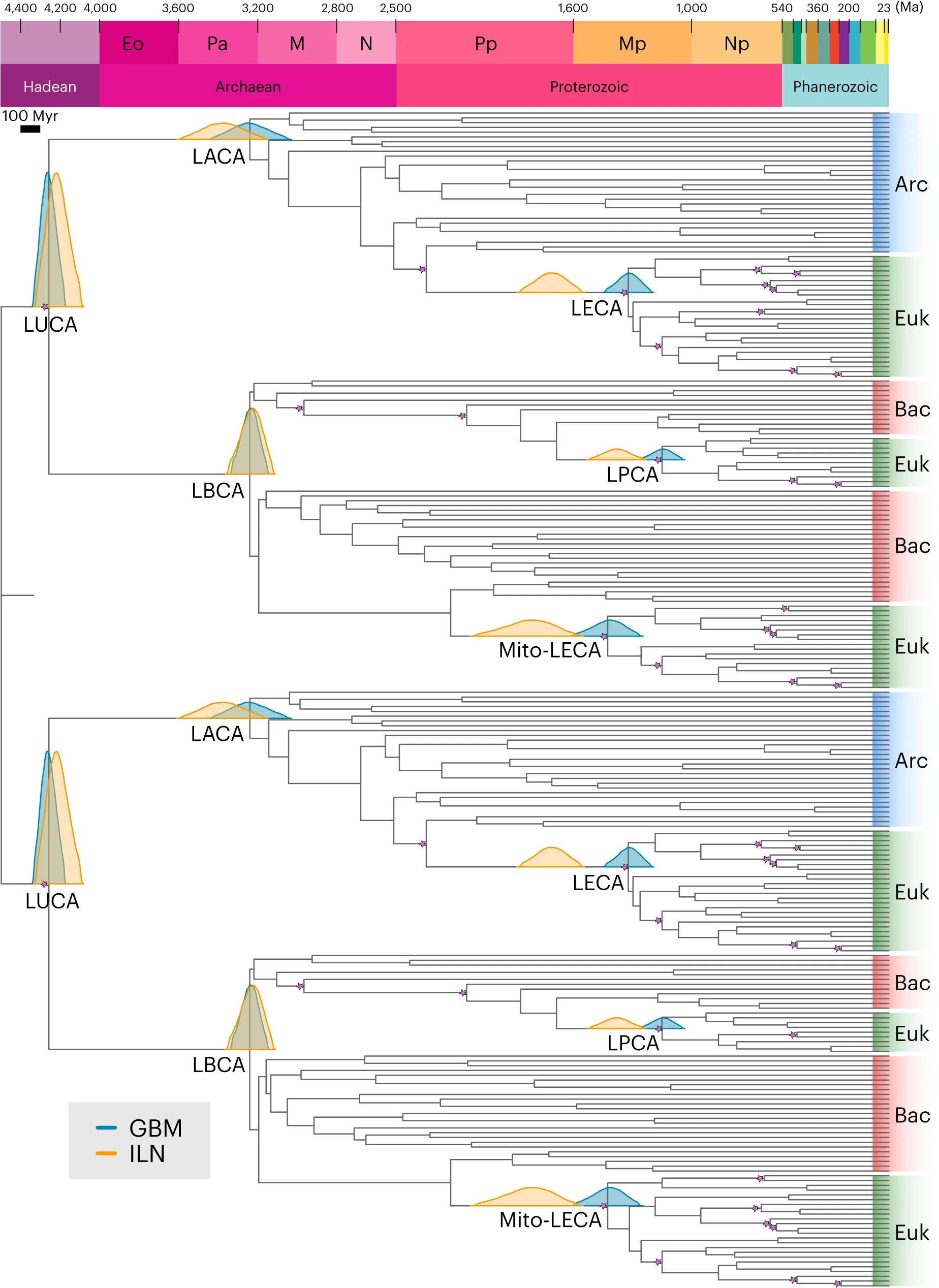New insights into LUCA’s age and nature
By Catherine Maggiori
Synopsis: This work from Edmund R. R. Moody et al. published in July in Nature Ecology and Evolution seeks to explain some of LUCA’s (or last universal common ancestor) most disputed attributes and its place among early Earth’s biosphere.
Life on Earth shares a common origin and a common ancestor. We know this based on shared traits across all 3 domains of life, including a universal genetic code and shared preferential chirality. This hypothetical organism (or population of associated organisms), ancestral to Bacteria, Archaea, and Eukaryotes, is called “LUCA” or “Last Universal Common Ancestor.”
LUCA is not a new concept; indeed, while the term itself was coined in a 1999 paper from Dr. Patrick Forterre, the idea that all extant life has emerged from a single node has been commonplace for several hundred years, perhaps most famously depicted in Charles Darwin’s 1837 “I think” sketch:
Figure 1. Darwin’s depiction of a rudimentary evolutionary tree (image courtesy of the American Museum of Natural History). The tree’s common ancestor (a LUCA analogue) is labeled as “1.”
The precise nature of LUCA, including its age and metabolism, is hotly debated, but some characteristics are largely agreed upon: LUCA was some kind of chemolithoautotrophic unit or population of beings that used prebiotic chemical reactions to sustain its own growth and metabolism, fixing its own carbon and using reduced chemical species for energy. LUCA was probably also anaerobic and thermophilic, living in and around alkaline hydrothermal vents (though some have argued it may have been constrained to surface environments). Genetically similar modern descendants of LUCA are clostridia and methanogens that live in crustal hydrothermal environments.
Elucidating more of LUCA’s fundamental attributes is no easy feat. Consider LUCA’s age: most timescales of life are based on the fossil record, which is spotty at best for the Archaean era when life first emerged on Earth, and prokaryotic fossils are difficult to analyze and calibrate phylogenetically. Errors in phylogeny also propagate from the tips to the root (i.e. from modern life to LUCA).
Typically, dating LUCA uses phylogenies of universal conserved single-copy marker genes with LUCA as the root. Conversely, this new work entitled “The nature of the last universal common ancestor and its impact on the early Earth system” from Moody et al. and published in July in Nature Ecology and Evolution utilizes universal paralog genes with two or more copies. In this kind of phylogeny, LUCA is no longer the tree’s root; instead, LUCA is represented by two descendant nodes (Figure 2). Calibrations can be applied multiple times and this cross-bracing reduces uncertainty and improves time estimates.
Figure 2. Moody et al.’s cross-braced phylogenetic tree presenting LUCA as two descendant nodes from the tree’s root based on geometric Brownian motion (GBM) and independent-rates log-normal (ILN) relaxed-clock models. This figure also shows the divergence of the last universal, archaeal, bacterial, and eukaryotic common ancestors (LUCA, LACA, LBCA, and LECA, respectively); the last common ancestor of the mitochondrial lineage (Mito-LECA); and the last plastid-bearing common ancestor (LPCA).
Another novel analysis constraint applied in this work is the upper bound for life’s emergence. A common maximum constraint on LUCA’s age is the Late Heavy Bombardment (LHB) period (~3.7–3.9 billion years ago). Instead, this paper uses the Moon-forming impact ~4.5 billion years ago as an upper bound, positing that the LHB may not have provided the necessary intensity and duration for total terrestrial sterilization.
Moody et al.’s results suggest that LUCA lived some ~4.2 billion years ago. The authors inferred LUCA’s physiology and metabolism based on probabilistic inferences of modern life’s metabolic pathways and networks.
LUCA was likely an anaerobic acetogen, using the Wood-Ljungdahl pathway for carbon fixation. LUCA may have been chemoautotrophic or organoheterotrophic, but likely not photosynthetic. It also probably contained some CRISPR-Car effector protein families, suggesting that LUCA possessed an early immune response.
LUCA’s metabolism produced acetate and organic matter, creating a niche for other microorganisms and indicating that LUCA was a key and active member of its habitat, rather than a solitary progenote.
Author info: Dr. Catherine Maggiori is an astrobiologist and microbiologist. You can find her at the bench, lurking on Twitter, or at the climbing gym.
Article info:


